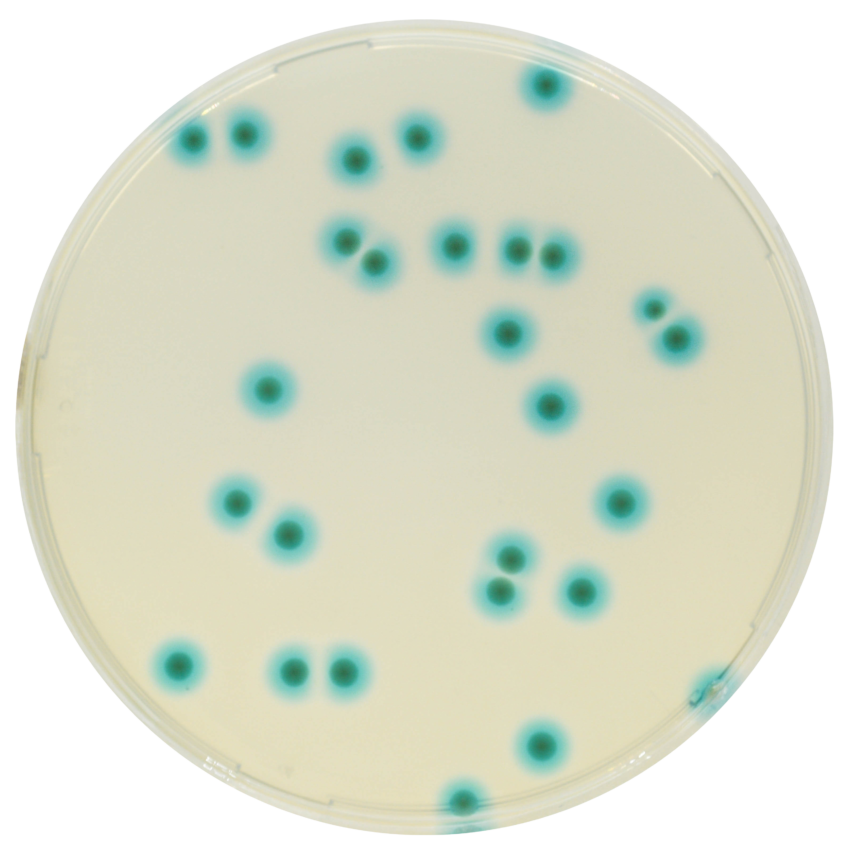Categories
- Molecular Biology
- Microscopy
- Nucleic Acid Purification
- PCR Enzymes
- RT-PCR Enzymes
- NGS
- Chromogenic Microbial Media
- General Microbial Media
- Fine Chemicals
- Homogenization Instruments
- Homogenization Consumables

CHROMagar™ B.cepacia - 5000 ml
# BK992Package size: 5000 ml
Brand: CHROMagar
CHROMagar™ B.cepacia - 5000 ml
DKK 3.000,00
Not in stock, delivery 1-2 weeks
Description
A strongly selective cromogenic medium for detection and enumeration of Burkholderia cepacia complex.
The product is composed of a powder base.
INTENDED USE:
CHROMagar™ B.cepacia is a selective chromogenic culture medium that is intended for use in the qualitative direct detection, differentiation and presumptive identification of Burkholderia cepacia complex (BCC) bacteria colonization in cystic fibrosis patients.
The test is performed by direct, or diluted, plating of sputum, expectoration, throat swabs, tracheal aspirates or bronchoalveolar lavages. CHROMagar™ B.cepacia results can be interpreted after 36-72 h of aerobic incubation at 35-37 °C.
A lack of growth or the absence of colonies on CHROMagar™ B.cepacia does not preclude the presence of BCC bacteria. CHROMagar™ B.cepacia is not intended to diagnose infection nor to guide nor to monitor treatment for infections. Further identification, susceptibility testing and epidemiological typing is needed on suspect colonies. The test has to be used in parallel of usual cultures antibiotic performed in cystic fibrosis patients.
CHROMagar™ B.cepacia can also be used in the qualitative and/or quantitative determination of BCC bacteria in the analyses of non-sterile, water-based pharmaceutical products, such as cream or sirup, in accordance with USP . In this case, CHROMagar™ B.cepacia results can be interpreted after 36-72 h of aerobic incubation at 30-35 °C.
MEDIUM PERFORMANCE:
1. High intensity: Burkholderia cepacia complex (BCC) colonies develop with an intense green-blue colony colour, clearly visible to the naked eye.
2. Limits contaminants: Mold is largely inhibeted.
3. All in one: Save time, the pre-weighed medium powder can be added to distilled water. No supplement is required.
4. Strains of interest: A few non-fermenting strains can form green-blue colonies. Some of these strains detected were reported as of diagnostics interest.
5. High specificity and sensitivity: Sensitivity ≈ 100 %* Specificity = 95 % (* Data obtained after 24-48 h incubation at 35 °C in aerobic conditions in the study “Evaluation du milieu CHROMAGAR™ B.CEPACIA pour la détection de B. cepacia chez les patients atteints de mucoviscidose. Julia MASOTTI et al., poster. RICAI 2021”).
TYPICAL APPEARANCE OF MICROORGANISMS:
Burkholderia → green-blue +/- blue halo
Yeasts and mold → Limited growth or inhibited
Gram (+) bacteria → Inhibited
Gram (-) bacteria → Limited growth or inhibited
Burkholderia cepacia complex (BCC), is a group of lactose-nonfermenting, Gram-negative bacteria composed of at least 20 different species, including B. cepacia, B. multivorans, B. cenocepacia and B. contaminans. BCC species can survive for long periods and multiply in hostile environments such as antiseptic and disinfectant solutions, distilled water, whirlpool baths, nebulizers and urinary catheters. Moreover, bacteria from the BCC show multidrug resistance.
BCC is among the most important pathogens isolated from cystic fibrosis patients and in hospital acquired infections. The pathogen causes life-threatening infections in cystic fibrosis patients which is associated with pulmonary function decline. It is also a cause of fatal disease in patient with chronic granulomatous disease. Several BCC outbreaks have been described due to contaminated medications, medical products and equipments. Therefore, a rapid detection and identification of bacteria from BCC are critical point for cystic fibrosis patients, but also for various non-sterile products used in hospitals and in environment.
The slowest growing species of BCC can be missed on conventional media such as Drigalski or MacConkey Agar due to the overgrowth of other organisms. CHROMagar™ B.cepacia is a strongly selective chromogenic medium which will detect most of the bacteria from the BCC within 24 - 36h.